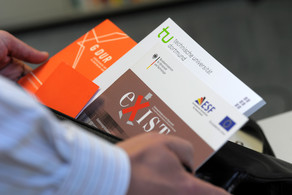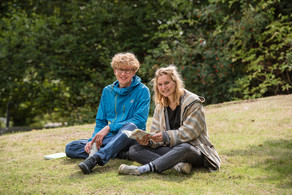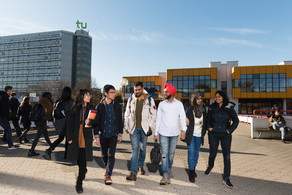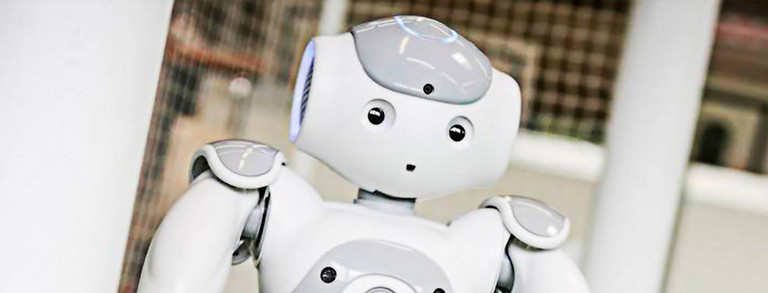In Search of New Physics
- Particle Physics
- mundo
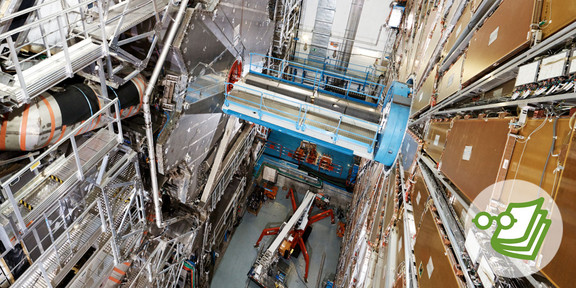
There are fascinating things happening underground near Geneva, Switzerland: One of the most powerful research sites of our time is located 100 meters underground. It is home to the world's largest particle accelerator with a circumference of around 27 kilometers. Over 14,000 people from all over the world work and research at CERN on the fundamentals of physics. One of them is Dr. Chris Malena Delitzsch, physicist at TU Dortmund University. She and her team are looking for new physics.
“All the visible matter that we know – almost everything composed of atoms – makes up only five percent of the entire universe. The rest consists of dark matter and dark energy, about which we still know very little,” explains Chris Malena Delitzsch. She became fascinated and wants to help us understand a lot more of what is happening around us. Her research focuses on elementary particles – i.e. particles that are not composed of any other particles – and how they interact. The physicist conducts basic research with the experiments at CERN.
Since 2022, she has led an Emmy Noether research group, for which she relocated to TU Dortmund University. This is funded by the German Research Foundation with two million euros and aims to prepare outstanding young scientists for a professorship. Alongside her team, Delitzsch conducts research at the Large Hadron Collider (LHC), the world’s most powerful particle accelerator. This is where protons are accelerated in a very large ring to make them collide. Her work is embedded in the ATLAS Experiment, one of the four main experiments at CERN.
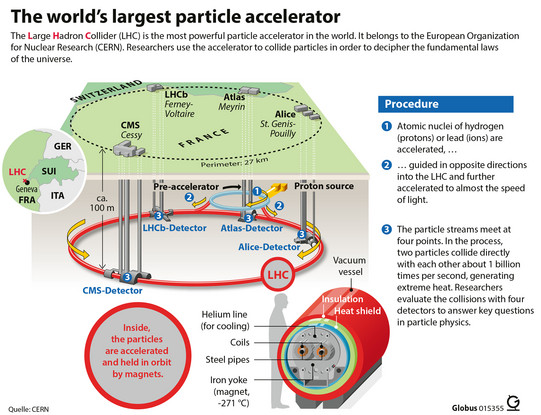
ATLAS is an onion-shaped detector that can be used to make particles visible – a kind of giant camera. This all-purpose detector is 45 meters long, with a diameter of 25 meters and weighing around 7,000 tons, making it the largest detector ever operated at a particle accelerator. It records the energy deposited by elementary particles. With the collected data, the researchers are trying to verify the predictions from the Standard Model of elementary particle physics. “We’re also trying to discover new physics that could offer information about previously inexplicable phenomena, such as dark matter,” says Delitzsch.
Our world’s smallest building blocks
The Standard Model of physics describes all elementary particles, i.e. our material world in its smallest building blocks. The last missing piece of the Standard Model was the Higgs boson. It was found at the LHC in 2012 but predicted back in the late 1960s by the researchers Peter Higgs, François Englert and Robert Brout. The LHC was originally built to accurately measure Standard Model predictions and discover the Higgs boson. “We now have a super active research field here. We measure this particle with the utmost precision to see whether the theoretical predictions correspond with the findings,” says Delitzsch, describing her work in more detail.
Another interesting particle is the top quark. “It’s around forty times heavier than the other quarks we’re aware of. This fact fascinates us because we don't know why that is," says Delitzsch. A total of six quarks have been discovered thus far. The two lightest quarks are the components of protons and neutrons, while the other quarks are heavier clones. When protons collide at the LHC, they split apart, and their components – the quarks – can interact with each other. This creates a large number of new particles, which are registered by the ATLAS detector. However, quarks cannot be detected directly, but instead produce a large number of high-energy particles known as hadrons. These hadrons form a bundled particle beam along the quarks’ trajectory and are reconstructed as a jet.
Jets, Higgs boson and top quarks – these are the research fields that Delitzsch's research group is pursuing. She is currently working in her junior research group with two doctoral students from India and Germany and two master’s students from Italy and Germany. In June, the team was expanded to include a postdoctoral researcher from India. Each member spends an extended period of time at CERN and helps operating the LHC. “We often sit in the control room in the middle of the night and watch the screens for eight hours – around the clock in a three-shift rotation so that nothing goes wrong,” says Delitzsch.
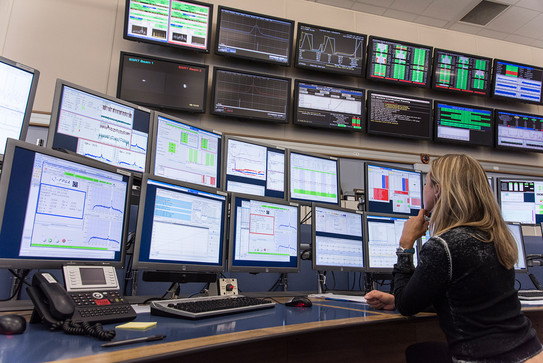
5,500 researchers from all over the world
Around 5,500 people from 245 institutes across 42 countries work on the ATLAS experiment. “I’m currently preparing an analysis with researchers from America, Romania, France, Sweden and Argentina, for example. This sometimes makes communication a bit difficult. Not necessarily because of the language, which is of course English, but rather because of the different time zones,” says Delitzsch.
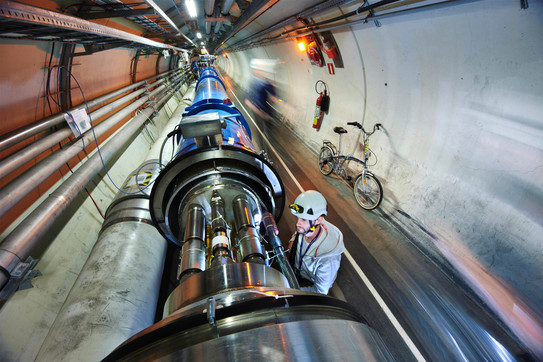
She herself was last at CERN in March 2023. The particle accelerator was brought out of its hibernation and the data collection started. Over several months, protons are brought to collision again. With the ATLAS detector measuring billions of reactions per second, an unimaginably large amount of data is generated. “Of course, we can't save all the data, as this would correspond to around one megabyte per collision, or 40 terabytes per second,” explains Delitzsch. As a result, the first challenge is developing algorithms that filter out relevant events. These are then stored and analyzed.
The ATLAS detector has different components where the different particles can be detected. One component is mainly concerned with detecting electrons, while another detects quarks, for example. The researchers measure where a particle passed through and how much energy it left behind. “Unfortunately, the data doesn’t directly tell us which particle it is,” says Delitzsch. This is where things get tricky. With the help of complex algorithms, the signatures are analyzed in the detector, and the individual particles are reconstructed. Each particle has a specific signature that describes which energies are recorded at which point.
Chris Delitzsch travels to Switzerland about four times a year and spends the rest of the time working from Dortmund: “TU Dortmund University is a great location for particle physics research. There is a great deal of collaboration with the other disciplines: for example, with colleagues with machine learning expertise, who help us develop new reconstruction algorithms; or with statisticians, who use their methods to help us analyze the data.” She also finds the link between her junior research group and other particle physics groups at TU Dortmund University extremely valuable. “Every day, we benefit from the extensive expertise here on site,” emphasizes Delitzsch.
Extremely rare events
She still has many visions for her research: “Obviously, I want to find new physics. This vision drives us particle physicists.” However, this is difficult with the current amount of data. In the future, the LHC should be able to work with even higher energies and produce more than ten times the current amount of data. This will also be another improvement for the ATLAS detector because: "The more data we record, the more likely we are of finding extremely rare events," explains Delitzsch.
However, the upgrade poses major challenges for the researchers due to the high number of collisions that occur simultaneously. Hadrons are particularly common in the additional collisions that overlap with the jets and contribute to their energy. “Part of my current research involves identifying the additional energy deposits from the hadrons and removing them from the jets,” says Delitzsch. More collisions create more particles that contaminate the relevant signal. “We are only interested in a few particles from specific collisions in the sea of particles produced. You can think of it like a hidden picture book: The more objects there are in the picture, the harder it is to see them individually,” she explains.
At the end of the year, Delitzsch will be back in Geneva for an extended period. She will then take over as the “Data Preparations Coordinator”. In this coordination role, she will ensure that the online recorded data can be used offline for physics analyses.
Text: Anna-Christina Senske
About:
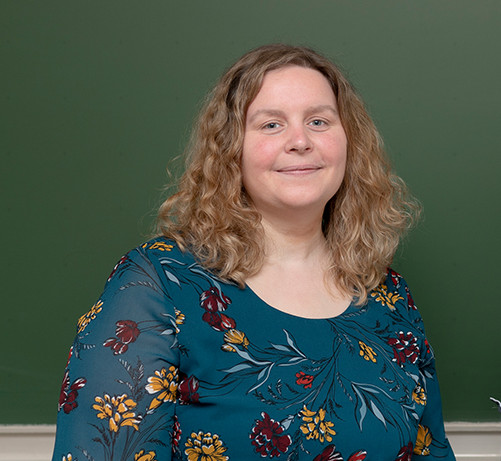
Since 2022, Dr. Chris Malena Delitzsch has been leading an Emmy Noether Independent Junior Research Group in the field of particle physics at the Department of Physics of TU Dortmund University. As the Internationalization Officer at the Department of Physics, she is the point of contact for students looking to gain experience abroad. Delitzsch earned a degree in physics at the University of Göttingen and was a doctoral student in Geneva from 2012 to 2016. Between 2017 and 2021, she was a postdoctoral researcher at the University of Arizona, while continuing her research at CERN, where she took on management positions: She led the Jet Substructure group from 2017 to 2019 and the Jet/Etmiss group, with around 200 members, from 2019 to 2021. Between 2021 and 2022, she worked as a scientist at TU Dortmund University.
This is an article from mundo, the research magazine of TU Dortmund University.



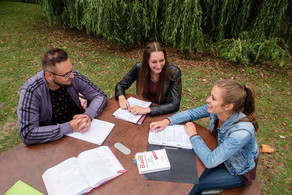
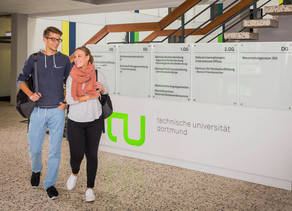
![[Translate to English:] Partner Four hands are holding the green logo of TU Dortmund University](/storages/tu_website/_processed_/1/d/csm_Partner_Nicole_Rechmann_KW_670eba0154.jpg)

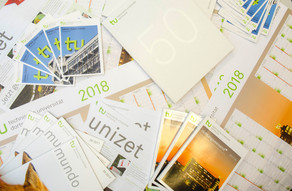

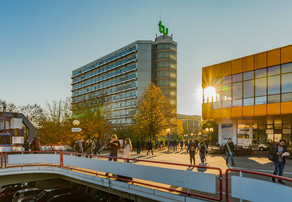
![[Translate to English:] Forschung An apparatus with tubes in a laboratory](/storages/tu_website/_processed_/0/c/csm_Forschung_Juergen_Huhn_4fa3153b51.jpg)
![[Translate to English:] Studium Five students are sitting in a lecture hall. They are talking to each other.](/storages/tu_website/_processed_/c/9/csm_Studium_FelixSchmale_dbdbfb0dd7.jpg)
